Mad for NAD (Part II) A Look Forward at the NAD C338 Hybrid Digital Integrated Amplifier
MSRP: $899 (Canadian)
‘In the House’ review by David Neice
Verdict
So, the question is this: can you teach an old farm dog like me any new tricks? You bet you can. This amplifier welcomed me into the vast world of audio streaming, being both Wi-Fi and Bluetooth capable. It has Google Chromecast Audio built in, and this allows easy streaming from Tidal, Amazon Music HD, and Spotify as well as other music streaming services.
By delivering on a hybrid Class D amplifier design, NAD has produced an amp with a very ‘neutral’ sound field capable of very loud sound reinforcement without strain. The dynamic power available is quite something to hear.
Moreover, the digital inputs and the on-board DAC (Burr Brown) are of sufficient quality that there should be no concern about sound quality. In this regard, the solid reputation of NAD in producing cost effective integrated amplifiers that sound very good is rendered intact. As a bonus, NAD includes a fine moving magnet phono input in the mix, that reflects its sonic traditions.
 With more than a casual nod to the future, the NAD C338 amplifier highlights both Class D design and on-board streaming. NAD touts the C338 as being the first hi-fi amp with Chromecast Built-in, and it makes using streaming services a snap. This is clearly the best extra feature offered by the amplifier and makes it well worth the cost.
With more than a casual nod to the future, the NAD C338 amplifier highlights both Class D design and on-board streaming. NAD touts the C338 as being the first hi-fi amp with Chromecast Built-in, and it makes using streaming services a snap. This is clearly the best extra feature offered by the amplifier and makes it well worth the cost.
The lengthy list of NAD’s past analog (Class AB) integrated designs will always be remembered for their excellence but will now also be viewed as missing some of today’s latest technological trends. These trends are now securely embedded within NAD’s line of integrated amplifiers.
The NAD C338 amp is therefore firmly recommended. Well done, NAD!
Background
This review follows on the heels of Steve Graham’s recent look back at the NAD 3020 amplifier, a classic piece of audio gear if there ever was one (link). After Steve wrote about the past success of NAD amplifiers (their Class AB amps like the 3020A), I wanted to look at the new directions taken by NAD within their current offerings in integrated amplifiers. So, this review is also about digital streaming and Class D amplification, two pretty hot topics amongst audiophiles, with both their advocates and detractors.
Except for my Spotify account, which I use on a laptop, I am a complete virgin at audio streaming. The siren’s voice has not called strongly enough for me to heed it, and anyway I have enough vinyl albums and CDs around to keep me going for at least another decade. So I am very late to the streaming party, and being a relative newbie is probably a good thing for this review.
Has NAD produced a successful and affordable amplifier for the hybrid digital age, and if so, how user friendly is it? Do you need a PhD in digital streaming technology to get it to work, or can you just take it out of the box and have it up and running and be happy? And what about Class D amplification; is it good enough to warrant the NAD marque that was built on decades of success in affordable Class AB amps?
The Build: Limits and Possibilities
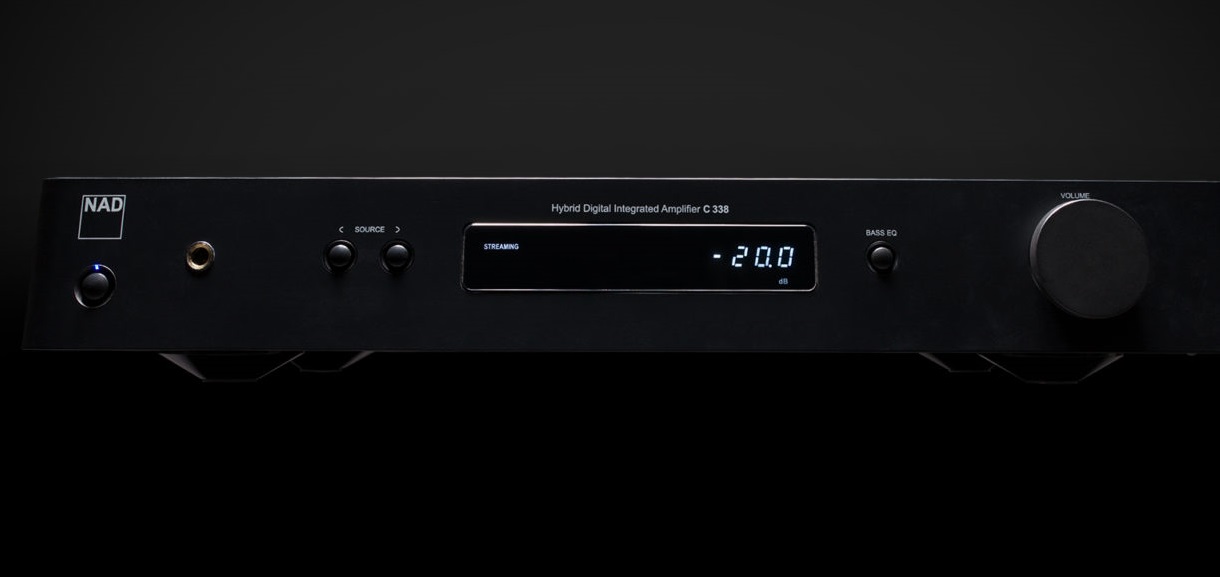 What defines a good digital amplifier? Essentially just a few analog inputs and outputs and lots of digital ins and outs. Yikes and yee gads; what am I to do? As an analog dinosaur, this is the first adjustment that is essential to my survival.
What defines a good digital amplifier? Essentially just a few analog inputs and outputs and lots of digital ins and outs. Yikes and yee gads; what am I to do? As an analog dinosaur, this is the first adjustment that is essential to my survival.
The NAD C338 sports just two single-ended analog line level inputs. While there is an on-board moving magnet phono stage (more about this later), all the rest of the I/Os are digitally oriented. So, for hookups a dinosaur like me is allowed fewer choices and they will have to suffice at filling my usual lengthy list of analog inputs. Forget tape loops, forget moving coils and forget XLR balanced inputs and so on – you won’t find them here. Still, the inclusion of the moving magnet phono stage is a very nice touch and resonates with the long tradition of NAD supplying its integrated amps with superior phono stages.
But what is to be gained by this digital I/O tilt? Well, essentially, considerable digital input flexibility is available. Additionally, Wi-Fi and Bluetooth are treated as ‘source inputs’, which ups the game and you can then dispense with any external streaming box.
The build quality on this amp is really lovely. An LED screen in the center of the front panel relays information about the state of the amp and its selected inputs. A large volume control is stationed on the right of the LED screen, and push buttons on the left control the input selections. A headphone jack fills the left corner, along with the on/off button. The only oddity is a small bass boost button that sits beside the volume control which adds a 6 db boost to the bass output. While the amp also has a dedicated sub-wooofer output, the bass boost (formerly known as Loudness) is a nice touch for users who have no sub – it helps fill in the missing lower octaves when listening at low levels, e.g. at night. This is good thinking on NADs part given the rather modest cost of the C338.
Around the back of the amp, we find the usual array of high quality connectors, along with the sockets for the Wi-Fi and Bluetooth antenna. The speaker posts are capable of handling banana jacks as well as bare wire or spades and are of nice quality. The analog inputs and the digital inputs are grouped quite tightly together, but I found that everything fits. There is a ground attachment post for the phono connection if needed. There is also a (fused) power inlet and a main off/on switch as this amp runs in stand by mode after this switch is thrown.
Hybrid Class D
The C338 shares a similar Class D amplifier topology with the larger sibling C368 and the C388. This amp utilizes a Hypex UCD module, and is specified “load-invariant” – the power rating is the same into 8 or 4 Ohm loads; though under “IHF Dynamic Power” they do show much higher capability into lower impedance loads. NAD has issued a white paper about it’s hybrid Class D technology which can be found here (Footnote 1). Essentially NAD argues that their Class D design offers high dynamic current capability with extremely low total harmonic distortion. Furthermore the design enables increased levels of negative feedback to be applied with low phase shift resulting in reduced distortion within the audio band.
As many audiophiles are aware, Class D amplifier designs are popping up all across the audio spectrum and offer very good efficiency when compared to big iron amps, as well as throwing almost no heat. Their use in ‘live sound’ professional audio applications due to their light weight is almost universal now.
Setting Up – the Basics
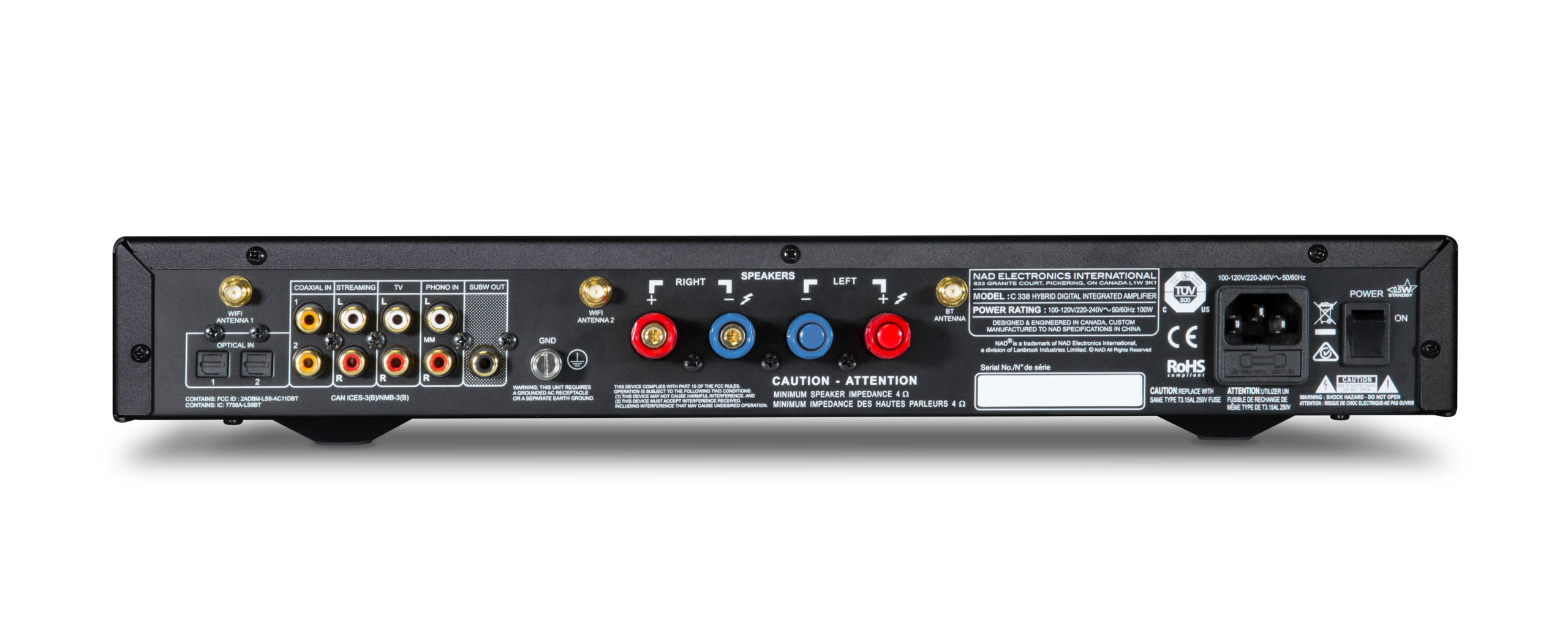 Out of the box, where it is soundly packed, the first step is to attach the three antennas (two for Wi-Fi and one for Bluetooth). Next we move to hooking up the speakers and the subwoofer. I used a splitter to attach the subwoofer as the inputs on my subwoofer have provision for left and right channels. The remote, which is quite tiny, needs the battery installed.
Out of the box, where it is soundly packed, the first step is to attach the three antennas (two for Wi-Fi and one for Bluetooth). Next we move to hooking up the speakers and the subwoofer. I used a splitter to attach the subwoofer as the inputs on my subwoofer have provision for left and right channels. The remote, which is quite tiny, needs the battery installed.
Next up is to select the inputs and I did this in discrete steps starting with the line level inputs, then the moving magnet input, then the coaxial and optical inputs and finally streaming via Wi-Fi and Bluetooth. Once hooked up the amp can be placed ‘in situ’ if you want it out of sight, and the rear switch can be thrown which sets it in stand-by mode. The front button or else the remote button then enables the amplifier’s full functions. This all went pretty swimmingly and despite my earlier concerns, I had no problem with enough inputs.
How Does The Amp Sound?
I first set the amplifier up using a pair of DALI Spektor 1s as the main speakers, and a powered subwoofer for bass reinforcement. This system has evolved in my living room over the past several months and sounds quite good now. Readers can see my commentary thread describing this rather budget level speaker solution on Canuck Audio Mart (Footnote 2). In the current situation this setup has the cardinal virtue of allowing me to use the subwoofer output on the NAD C338. Some subtle adjustment to the subwoofer volume level was needed to match the output of the NAD but this was effected in a few minutes time. Later in the review, I will report on the NAD when paired with other speakers.
I report here on the sound field thrown by the amplifIer in four separate steps. First I will comment on the ‘line level’ inputs; then the phono stage; then the digital inputs, and finally the sound quality when streaming.
Line Level Inputs
The line level inputs sound very good indeed. Right off the bat I was stunned at how ‘neutral’ this amplifier was in comparison to my single-ended Unison Research ‘Simply Italy’. My Italian amp is enormously coloured and is enriched with some significant midrange second harmonics as one might expect from a single-ended EL34 design. This coloured presentation by the ‘Simply Italy’ is, however, tremendously addictive. By contrast, the NAD impresses the listener by carving out all this euphonic glory and just presenting the music simply as it is. At first I thought this struck me as a modest sonic lack, but the more I listened the more I was led to believe that the ‘neutrality’ of the NAD was actually the more correct sound field.
If any criticism is to be applied to the NAD’s line level inputs it would have to be that the overall presentation seems a bit soft, and that the sound stage is restricted in terms of stage depth.
Moving Magnet Phono Stage
NAD includes a dedicated moving magnet phono stage with the NAD, and I had high hopes for it as NAD has a long reputation of including good phono stages within its range of integrated amplifiers. I was not disappointed.
I played a lot of vinyl through the NAD using a Nagaoka MP110 cartridge and the sound stage immediately opened up and widened as well as deepened, with more layering of the musical presentations. After much listening to all the inputs available, I finally came to the conclusion that the phono stage was sonically one of the main highlights of the NADs performance. This may seem very odd as it is after all an analog source within this heavily digitized component, but I was very glad that NAD included the phono stage in its design as it would have been easy to justify not including it in a digital product like this one.
Coaxial and Digital Inputs
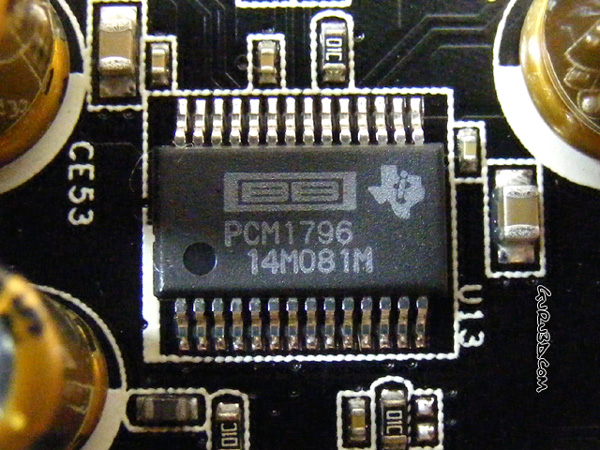 Finally, I hooked up my Cambridge 640C V2 CD player to the NAD, using both coaxial and digital optical cables so the CD player would simply act as a transport. This is the acid test for a DAC-equipped device as the performance depends entirely on the DAC residing in the amplifier. I queried Lenbrook (the parent company and distributor for NAD) about the origins of the internal DAC, as the specification sheet simply says it is capable of 24-bit and 192KHz resolution. They replied that the DAC chip is a Burr Brown PCM1796.
Finally, I hooked up my Cambridge 640C V2 CD player to the NAD, using both coaxial and digital optical cables so the CD player would simply act as a transport. This is the acid test for a DAC-equipped device as the performance depends entirely on the DAC residing in the amplifier. I queried Lenbrook (the parent company and distributor for NAD) about the origins of the internal DAC, as the specification sheet simply says it is capable of 24-bit and 192KHz resolution. They replied that the DAC chip is a Burr Brown PCM1796.
To my pleasant surprise the onboard DAC proved to be a very fine reproducer and I found little difference between the dual Wolfson DACs in the Cambridge unit (one per channel) and the single Burr Brown DAC onboard the C338. There was a very slight loss of ultimate definition and air, but little else of note. The digital inputs, like the phono input, seem very robust and offered extra definitional insight into the music when compared to the two line level inputs. I was immediately impressed and thought this would bode well for the ‘streaming phase’ of the review which requires a separate set-up discussion.
What is really noticeable is that on all inputs the NAD Class D design allows you to really open up the volume control. I am not used to listening at thundering levels, but the clarity of the amp keeps begging you to push the volume levels up to really high marks. As the volume increases so does the PRaT. Rhythm and timing are a bit underwhelming at low volume levels but as the volume levels rise the NAD C338 comes on strong and shakes your booty. I think this is because the Class D design, while able to deliver 50 watts (8 and 4 ohms) continuous, has the potential to deliver up to 150 watts of dynamic power and 300 watts peak. So my message is that if you like to ‘let her rip’ then this could be your amp.
On to Streaming
It was with some trepidation that I began the streaming portion of this review. I decided that Spotify would serve as my the first attempt at Wi-Fi streaming to an audio system, as I am quite familiar with the Spotify interface. As well, I have an extensive collection of curated custom playlists on Spotify that I use when I want to just shut things off and listen on my laptop. These playlists cover everything from classic soul music to dance tracks. So, Spotify it would be.
It turns out that my fears of encountering a set-up glitch were unfounded. As per the manual’s instructions, I downloaded the ‘Google Home’ app to my Samsung Android tablet, and set it up for ‘Chaos Manor’, our home network name. Then I took my Android tablet into the living room and fired up the NAD C338 as instructed. The Google Home App immediately sniffed out and recognized the NAD, and with a few on-screen instructions and keystrokes, the pairing of the app and the NAD via a Wi-Fi interface was complete. I then triggered off the Spotify app and immediately the app indicated that ‘living room speakers’ were available via ‘Spotify Connect’ and with a simple tap of the pen, voila. It was amazingly easy.
I then spent several pleasant hours streaming my custom playlists through the NAD without so much as a hiccup. It was a real pleasure to hear these tracks via speakers rather than using earbuds, and I just lay on the couch luxuriating in my technological prowess. Of course, there was some loss of fidelity with the compressed files from Spotify but overall the sound is quite good indeed and varies really by the quality of the original recording. (note that this review was done in June/July 2021, prior to Spotify Hi-Fi)
Streaming Amazon Music HD, however, was another story. Actually I am kidding you, because it was easier than Spotify. I simply signed up for a subscription which was facilitated by the fact that I have a standing Amazon account. That took maybe a few keystrokes. Then I downloaded the Amazon Music app from Google’s Play Store, opened the app and found the ‘casting’ button, and soon music flowed out of the speakers. It was drop dead easy.
I chalk all this up to the fact that Chromecast Audio is built into the NAD C338. This was an inspired choice for NAD to make as the resident Chromecast means that the unit can work seamlessly with almost any available on line music streaming service. I did not try Tidal, but I would expect the same seamless integration. It is brilliant really.
The Soundscape Revisited
WI-Fi reproduction through ‘Spotify Connect’ is very good, despite the fact that Spotify uses the lossy compression format Ogg Vorbis. Initially I found the reproduction via Amazon Music to be less than stellar even though Amazon touts CD quality and HD tracks. I discovered though that the Amazon app on my tablet had defaulted to ‘standard definition’, which is code in Amazon Music for ‘compressed and low bandwidth’. When I reset the option to ‘CD quality’ everything just changed and was back to normal.
 Finally, we come to the Bluetooth possibilities. Pairing with Bluetooth is quite easy and most of us have all done it before. But I do draw the line in the sand when it comes to BT streaming. It is just not audiophile quality reproduction. It sounds to me more like streaming MP3 files over a 128Kbps conduit. The quality is just not there. Mind you I do not have the latest BT audio protocols on my Samsung Galaxy phone but even so I cannot really recommend this path to our readers. Please stick with Wi-Fi streaming if possible.
Finally, we come to the Bluetooth possibilities. Pairing with Bluetooth is quite easy and most of us have all done it before. But I do draw the line in the sand when it comes to BT streaming. It is just not audiophile quality reproduction. It sounds to me more like streaming MP3 files over a 128Kbps conduit. The quality is just not there. Mind you I do not have the latest BT audio protocols on my Samsung Galaxy phone but even so I cannot really recommend this path to our readers. Please stick with Wi-Fi streaming if possible.
Overall, I would rank the sound quality obtainable through the line level and digital inputs as the highest level obtainable with this particular NAD amplifier. This is followed by the moving magnet phono stage and the Spotify Connect/Amazon Music streaming results. I listened for many hours to my Spotify custom playlists and never felt cheated. Frankly, I could happily listen to Spotify lossy files with this amp forever and never miss or really care about high definition tracks (Footnote 3). It just works.
Speaker and Amplifier Combination
As a final touch we investigated the swapping of speakers. I will make this short. My DALI Oberon 5 speakers are always fun to listen to and the NAD amplifier swept in with a raft of PRaT, which further emphasized their fun factor. It was also nice to ditch the subwoofer, as the Oberon 5s are full range floorstanders and do not need any bass boost. These speakers would always be a highly recommended pairing with this amplifier and once again I listened to Spotify tracks on this combo for many hours and thought ‘this is all you really need’.
Rotating in the JMR Bliss Jubilees, which were out of use for several months now, reminded me of how unique these speakers are when compared to others. They are, above all, intimacy seeking speakers and prefer the quiet stuff. The NAD amplifier was well up to the task of driving the JMRs and overall I got the best sound from the amp with the Bliss Jubilees while using the onboard Burr Brown DAC. There seemed to be some very good synergy between this Class D amplifier and these speakers.
Finally, I briefly listened to a pair of Audio-Technica headphones. Headphones are really not my thing but I can report that the results were all as expected, and similar to my speaker observations above.
Summary
If you use Spotify or other streaming services regularly and want to transition to speakers and ditch those earbuds, then this amplifier is your natural path. Buy a pair of DALI Spektor 1s or 2s, or DALI Oberon 1s or 3s and then purchase this amp and let her rip (Footnote 4). The NAD C338 is firmly recommended.
Footnotes:
(1) https://nadelectronics.com/product/c-338-classic-digital-dac-amplifier/
(2) My commentary on CAM can be found here https://www.canuckaudiomart.com/forum/viewtopic.php?f=6&t=60501
(3) Spotify recently announced a rollout of high definition/uncompressed services in some selected markets.
(4) With the Spektor 1s and Oberon 1s you may prefer them with a small sub-woofer.
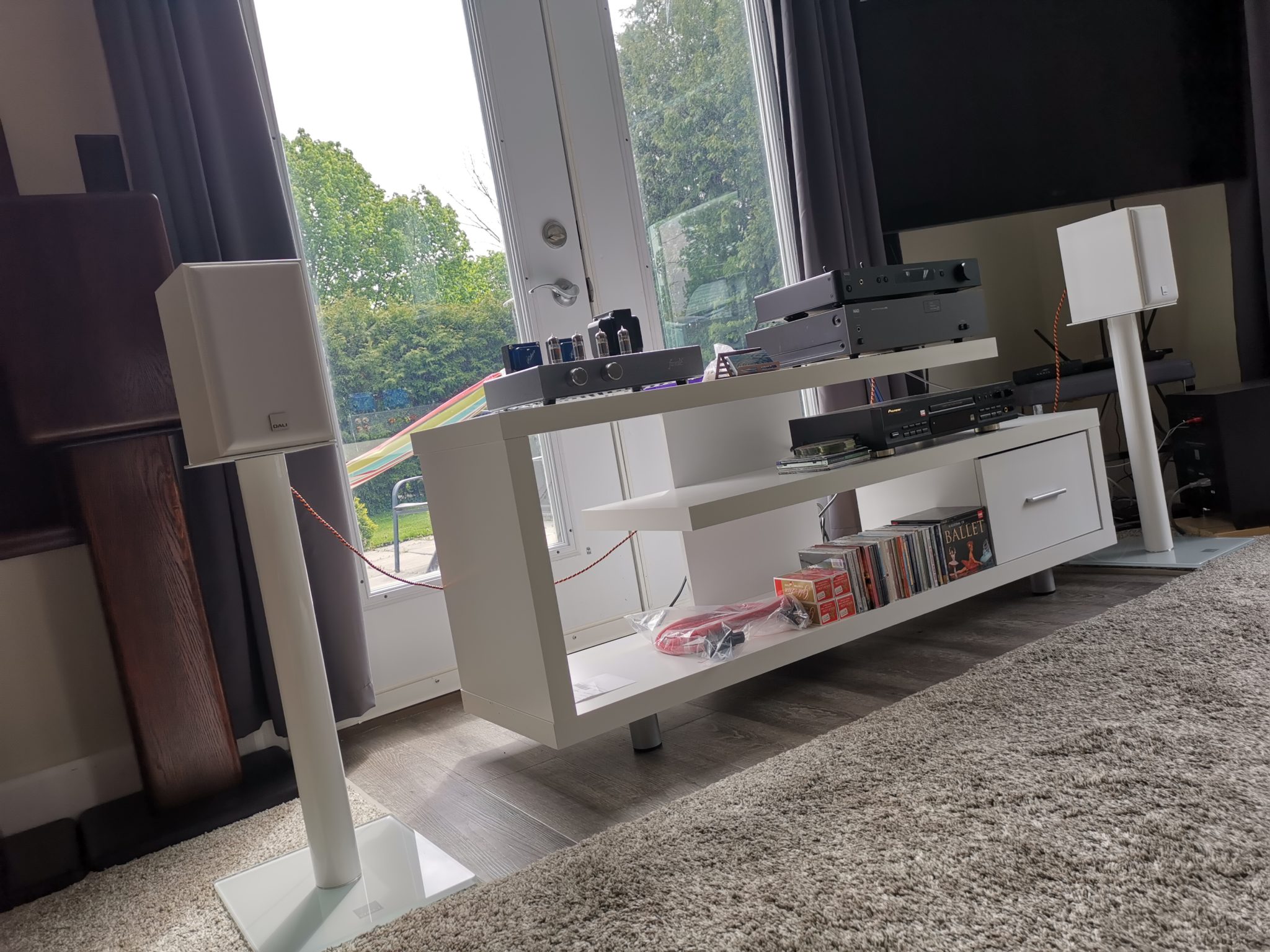
Disclosure: Wall of Sound editor Noam Bronstein is also a Lenbrook/NAD dealer.

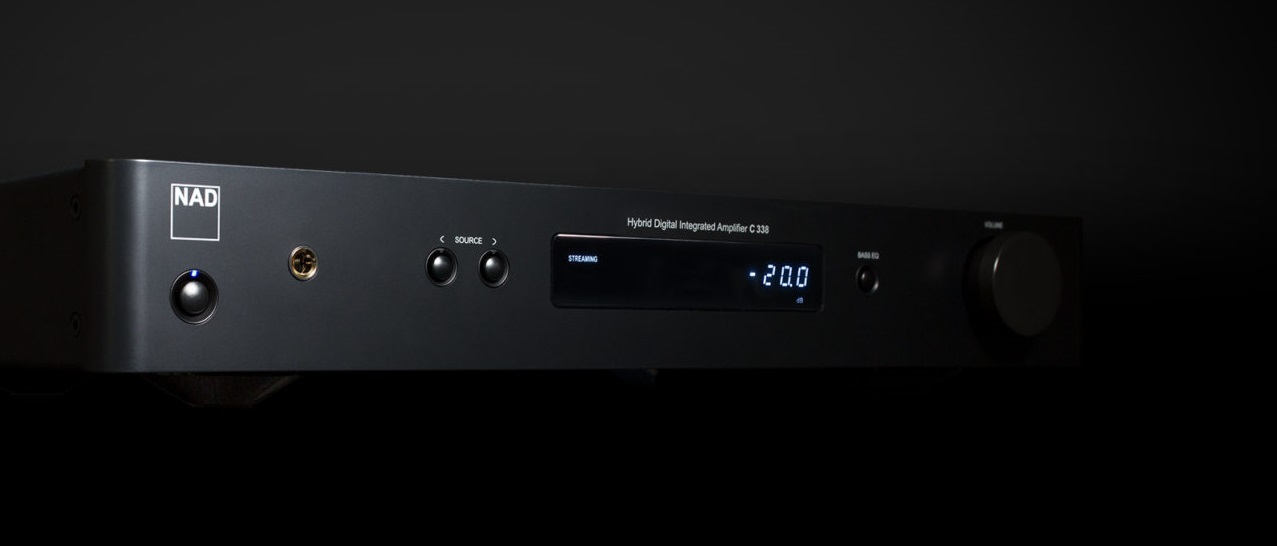
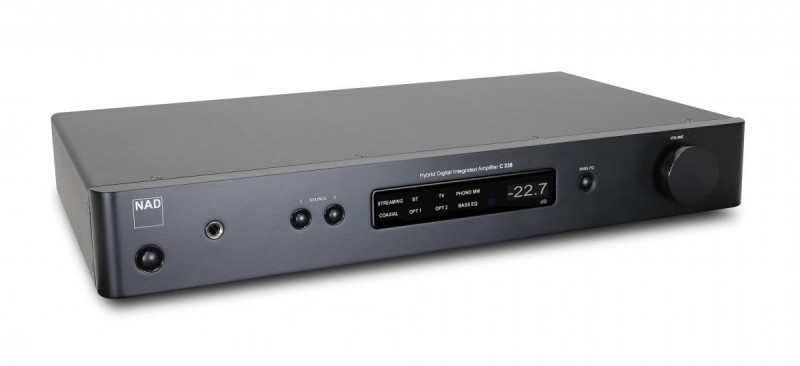
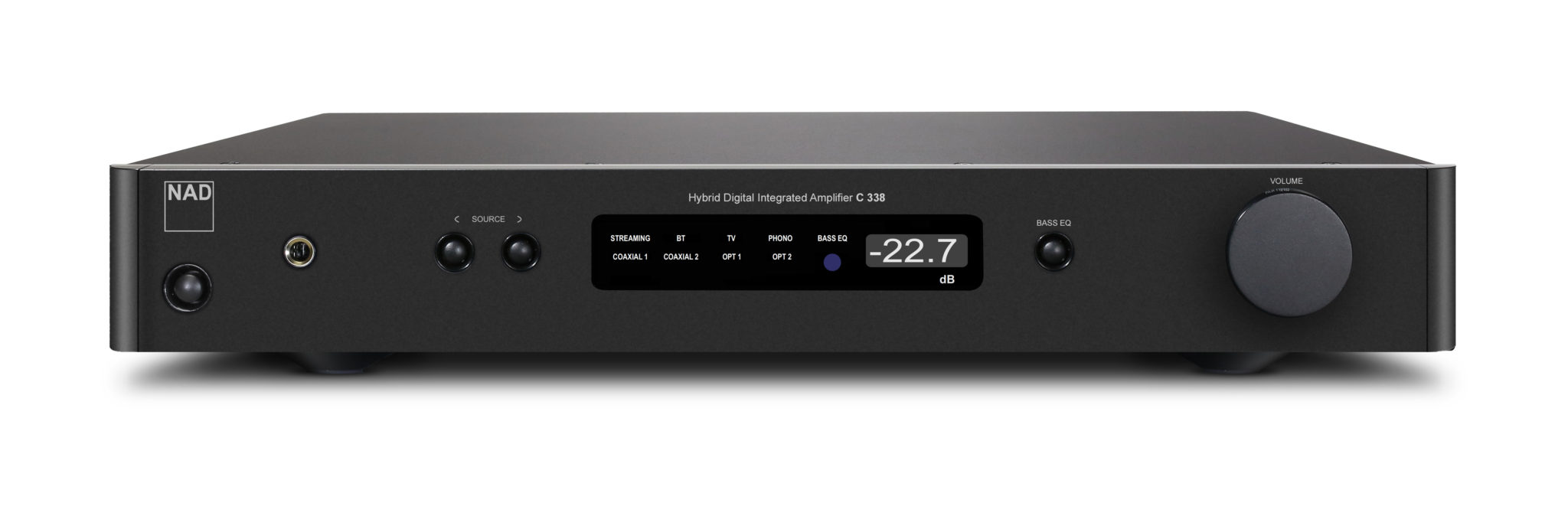

I really enjoy your reviews and your take on the Dali Spektor 1 and possibly the NAD 338 especially. After I retired and down sized my home and audio system music isn’t as enjoyable. My living room is small so sold my Sonus Faber/ Cary system and have Klipsch R41PM powered speakers with a Klipsch R80SW1 sub. A convenient set up but not enticing. I think from the other speakers you mentioned the Spektor 1 with an Int Amp, possibly the NAD 338 or the Tangent or NAD D3020 2, and maybe a better sub (although I keep it at a very low level) might be just what I need. Thanks for sharing your expertise and for comparisons in your reviews.
Thanks for your interest, Steve!
-Noam
If you use DLNA for streaming you will get an even beter sound quality.
Because then you can stream in 24/192khz.
Does the built in DAC support MQA when using Tidal?
Hi John,
No, not on this model. C338 is a bit of an outlier now, with the built in Chromecast Audio. Still works fine though.
Up the line, the NAD amps support MQA (using the optional BluOS module cards). In any case the future of MQA appears to be in doubt lately.
Regards,
Noam
Hi Paul,
This was a review of the C338, which has a modest power rating. Your comment I think relates to the C368.
Thanks,
Noam